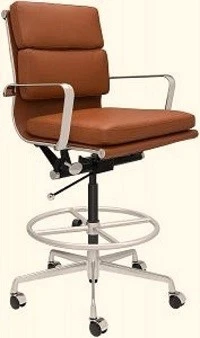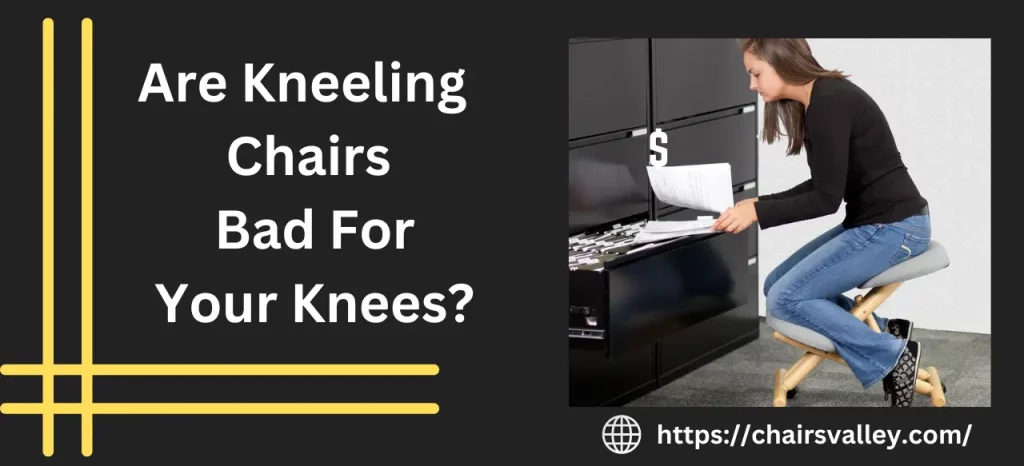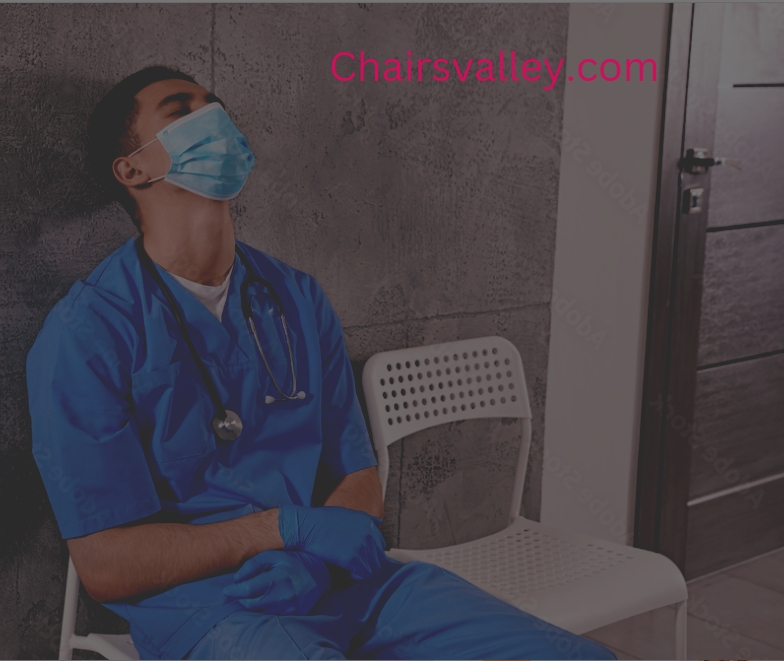Are you tired of the constant struggle with your office chair sinking down? It’s time to put an end to this frustrating experience and regain control over your workspace. A sinking chair not only disrupts your workflow but also hampers your comfort, ultimately affecting your productivity. In this article, we delve into the root causes of this problem and offer practical solutions to “why does my office chair keep sinking down”
Table of Contents
Introduction
An office chair is a necessary furniture item that plays a vital role in ensuring comfort and support throughout extended work hours. However, it can be quite bothersome when the chair gradually lowers its height, requiring frequent readjustments. To understand why this happens, let’s delve into the mechanics of an office chair.
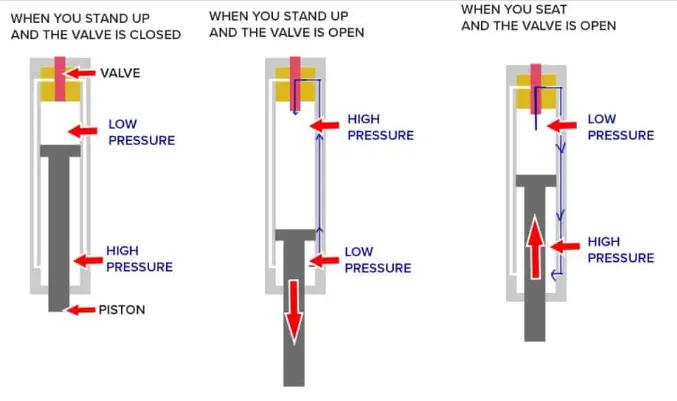
Understanding the Mechanics of an Office Chair
To comprehend why an office chair sinks down, it’s important to familiarize yourself with its components. An office chair typically consists of a seat, a backrest, armrests, a base, and a gas lift cylinder. The gas lift cylinder is responsible for adjusting the chair’s height according to your preference.
The gas lift cylinder functions through a pressurized gas system. When you engage the height adjustment lever, the compressed gas inside the cylinder allows the chair to move up or down smoothly. However, several factors can contribute to a sinking office chair.
For related article click on: How Long does an Office Chair Last?
Common Reasons for an Office Chair Sinking Down
Poor Quality Gas Lift Cylinder
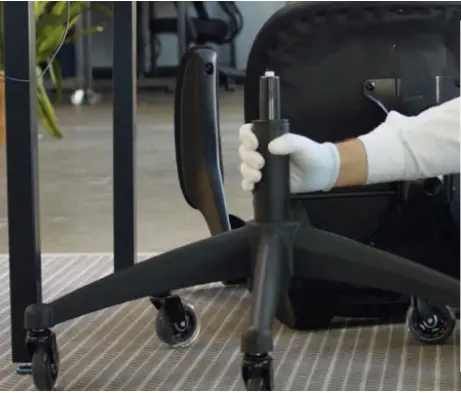
One of the main culprits behind a sinking office chair is a poor-quality gas lift cylinder. Over time, the internal seals of the cylinder may deteriorate or develop leaks, causing a loss of pressure. This loss of pressure results in the chair slowly sinking down.
Damaged or Worn-out Seat Mechanism
The seat mechanism is another critical component of an office chair that can contribute to the sinking issue. If the seat mechanism is damaged or worn out, it may not provide adequate support to keep the chair in a fixed position. As a result, the chair gradually lowers its height.
Loose or Faulty Height Adjustment Lever
The height adjustment lever, which controls the movement of the gas lift cylinder, can also be a factor in a sinking office chair. If the lever is loose or faulty, it may not properly engage with the gas lift cylinder, leading to uncontrolled height adjustments and eventual sinking.
Insufficient Weight Capacity
Every office chair has a weight capacity limit. If the weight placed on the chair exceeds this limit, it can cause the gas lift cylinder to lose pressure over time, resulting in a sinking chair. It is important to choose a chair that can adequately support your weight to prevent this issue.
Solutions to Prevent Your Office Chair from Sinking Down
While a sinking office chair can be frustrating, there are several solutions available to rectify the problem and prevent further sinking.
Replacing the Gas Lift Cylinder
If you suspect that a faulty gas lift cylinder is the reason behind your sinking office chair, replacing it can be a viable solution. Ensure you choose a high-quality replacement cylinder compatible with your chair model.
Repairing or Replacing the Seat Mechanism
If the seat mechanism is damaged or worn out, it’s essential to repair or replace it. Consult a professional or refer to the chair’s user manual for guidance. Alternatively, if the chair is under warranty, contact the manufacturer for assistance.
Checking and Tightening the Height Adjustment Lever
Inspect the height adjustment lever of your office chair and ensure it is securely attached. If it feels loose or malfunctioning, tighten or replace it accordingly. This step will help maintain a stable height adjustment and prevent sinking.
Choosing a Chair with a Higher Weight Capacity
To avoid issues related to weight limits, consider investing in an office chair with a higher weight capacity. This ensures the chair can withstand the load placed on it, preventing the gas lift cylinder from losing pressure.
Maintenance Tips to Extend the Lifespan of Your Office Chair
Regular maintenance can significantly extend the lifespan of your office chair and minimize the chances of it sinking down prematurely. Here are some maintenance tips to keep in mind:
Regular Cleaning and Lubrication
Clean your office chair regularly to remove any dust, debris, or spills. Additionally, lubricate the moving parts, such as the gas lift cylinder, with appropriate lubricants to ensure smooth operation.
Avoiding Excessive Weight or Rough Usage
Be mindful of the weight limit specified for your office chair and avoid exceeding it. Similarly, avoid using excessive force or rough handling that could strain the chair’s components.
Proper Positioning and Adjustment of the Chair
Ensure that your chair is properly positioned to distribute your weight evenly. Adjust the seat height, backrest angle, and armrest positions to maintain an ergonomic and comfortable posture.
Periodic Inspections and Repairs
Regularly inspect your office chair for any signs of wear and tear. Check the gas lift cylinder, seat mechanism, and height adjustment lever for any faults or damage. Address any issues promptly to prevent further problems.
Benefits of Investing in a High-Quality Office Chair
Investing in a high-quality office chair goes beyond avoiding the sinking issue. Here are some additional benefits of choosing a chair of superior quality:
Enhanced Comfort and Productivity
A high-quality office chair offers better ergonomics, cushioning, and adjustability, resulting in increased comfort and improved productivity during long working hours.
Improved Posture and Reduced Back Pain
A well-designed chair with proper lumbar support can improve your posture, reducing the risk of back pain and discomfort associated with poor sitting habits.
Durability and Longevity
High-quality chairs are built to last, with sturdy materials and superior craftsmanship. Investing in such a chair ensures its longevity, saving you money in the long run.
Conclusion
If your office chair keeps sinking down, it can be both frustrating and detrimental to your work experience. Understanding the mechanics behind the sinking issue and implementing appropriate solutions can help you maintain a stable and comfortable seating position. Regular maintenance and investing in a high-quality chair can also prevent this problem from arising in the first place, ensuring a productive and comfortable work environment.
Recommended Office Chairs for Long Term:
Our Experts recommend Three best office chairs that doesn’t sink and have best quality materials used. We always recommend Herman Miller Brand in this category as they are best in market for manufacturing Office Chairs.
- Herman Miller Aeron Chair Size B Fully Loaded Posture Fit
- Herman Miller Embody Ergonomic Office Chair
- Mirra Chair-Highly Adjustable by Herman Miller
FAQs
How can I fix a sinking office chair temporarily?
You can try using a cushion or pillow to add temporary height to your chair. However, it is recommended to address the underlying issue and seek a permanent solution.
Are there any DIY solutions for a sinking chair?
While some DIY solutions may exist, it is advisable to consult a professional or contact the manufacturer for guidance. DIY repairs may not be as effective or safe in the long term.
Can I adjust the height of my office chair manually?
Most office chairs come with a height adjustment lever that allows you to adjust the chair’s height manually. However, if the chair is sinking down despite adjustments, it may indicate a problem that requires attention.
What is the typical weight capacity of an office chair?
The weight capacity of office chairs can vary significantly. It is important to check the specifications of the chair you are considering to ensure it can support your weight adequately.
What are the signs of a worn-out gas lift cylinder?
Signs of a worn-out gas lift cylinder include increased difficulty in adjusting the chair’s height, sinking down even after adjustments, or audible hissing or leaking sounds. If you notice these signs, it may be time to replace the gas lift cylinder.
With a decade of experience in the chairs industry, Khalidamin brings a wealth of knowledge to Chairsvalley.com. His deep understanding of chair design, materials, and ergonomics ensures you receive expert insights. Explore the world of chairs with Khalidamin, your trusted source for a decade of expertise.

![Are Massage Chairs Good For You: Yes Or No? [A Fair Discussion]](https://chairsvalley.com/wp-content/uploads/2022/10/a-2-1.webp)




